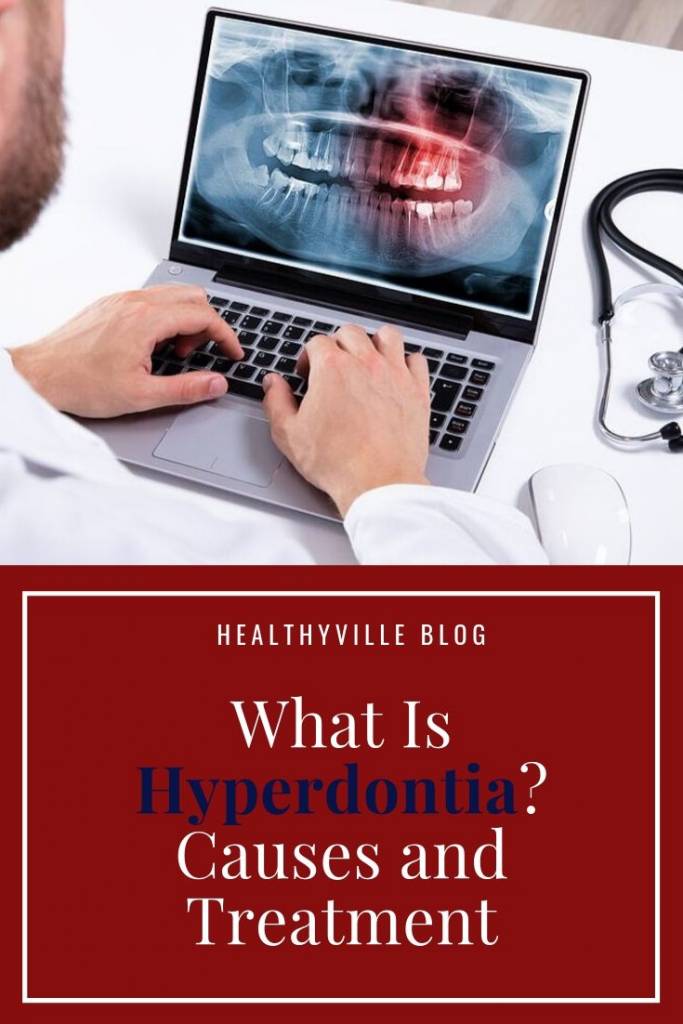Hyperdontia is a condition where there is the appearance of an excessive number of dental pieces. It affects about 3% of the population. What are the causes? What treatments are available? We will tell you.
Hyperdontia is the condition in which the person develops a number of teeth above the standard figure (32 pieces in adults and 20 pieces in children). It affects between 2 and 3% of the population. What is hyperdontia exactly? In the following space we will explain it in detail. In addition, we reveal its main causes and treatments.
What is hyperdontia?
Hyperdontia is an excessive number of teeth. These older teeth that are in the mouth are called “supernumerary.” Most of these teeth are in the upper arch, specifically in the midline between canine and canine.
The most common is the “mesiodens” between the two upper central incisors. They usually have a shape similar to that of adjacent teeth, although there are different types:
- In the form of a plug or cone.
- Molariform: molar shaped.
Hyperdontia comes with alterations in the rash. It can be simple, multiple or in association with different syndromes.
These teeth can cause alterations in the rash, either by occupying the arcade space of other teeth or by blocking the eruption guide.
Causes of hyperdontia
Abnormalities in the number of teeth in the mouth may exist by default. It can exist in both temporary dentition and definitive dentition. Hyperdontia happens when the number of 20 in temporary dentition and 32 in the final dentition is exceeded.
The exact cause is unknown, but there is a genetic component in non-syndromic hyperdontia. Supernumerary teeth are due to an hyperactivity of the embryonic cells that form the teeth. This may be due to various causes:
- Premises: by infections, trauma etc.
- General: by syndromes.
It is more frequent to find it in men, with a 2-1 relationship against women. It is also more common in permanent dentition than in temporary dentition.
What is the treatment of a hyperdontia?
You get the diagnosis of this pathology by the performance of an x-ray to evaluate the dental germs. They can give clinical symptoms, such as delayed rash, bad dental positions, diastema, among others. The doctor should propose treatment according to each type of supernumerary and each patient.
Read more: 5 Dental Solutions That Help You Take Care of Your Oral Health
You can treat hyperdontia with different treatments. However, to choose between one and the other it is necessary to make a study of the particular case.
Extraction
The extraction of the supernumerary tooth is usually the recommendable treatment to avoid possible problems in the eruption or in the placement of the teeth in the arch.
But, there is the problem that an early extraction, in the case of children, can damage the apex of adjacent teeth that have not yet been formed. Therefore, an individual study must be carried out to decide the time of extraction.
Orthodontics
Normally, in cases of hyperdontia, after performing the supernumerary tooth orthodontics, it is necessary to use orthodontics to be able to harmonize the arch and to conserve the space for the definitive tooth that the supernumerary was occupying.
Replacing another tooth with agenesis
There are some cases of hyperdontia in association with the absence of some other tooth, encountering a tooth with an unusual shape. In these cases, we use the supernumerary tooth to replace the missing tooth, giving it the aesthetic through a crown or a veneer.
In summary
When a person has a number of teeth greater than the standard figure, they have hyperdontia. It is a condition in which genetic components, but also other factors such as trauma are present. The treatment chosen depends on the individual; that’s why you need to go through thorough checks to establish the best option.
Don’t forget to SHARE what is hyperdontia with your friends and family on your social networks!

